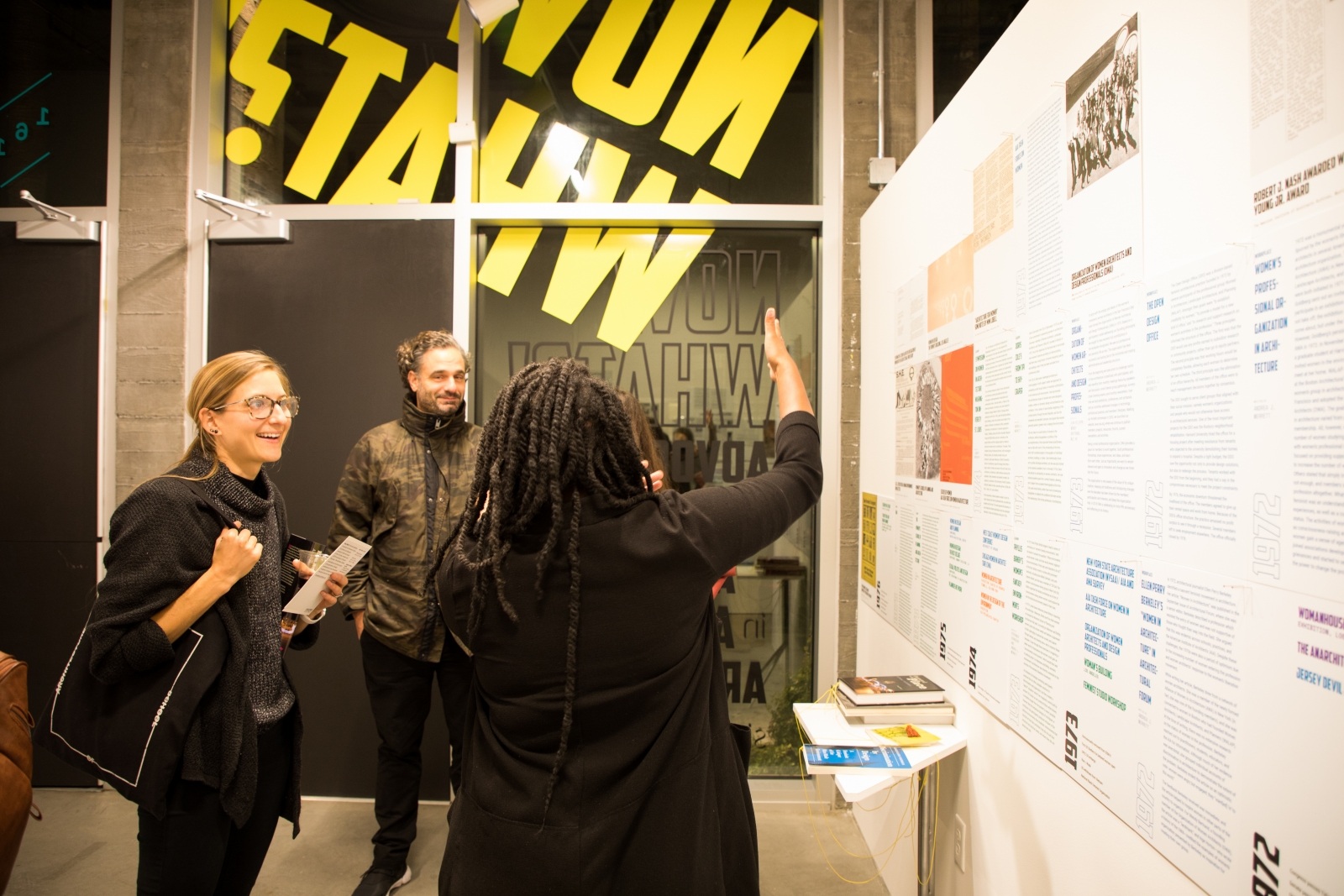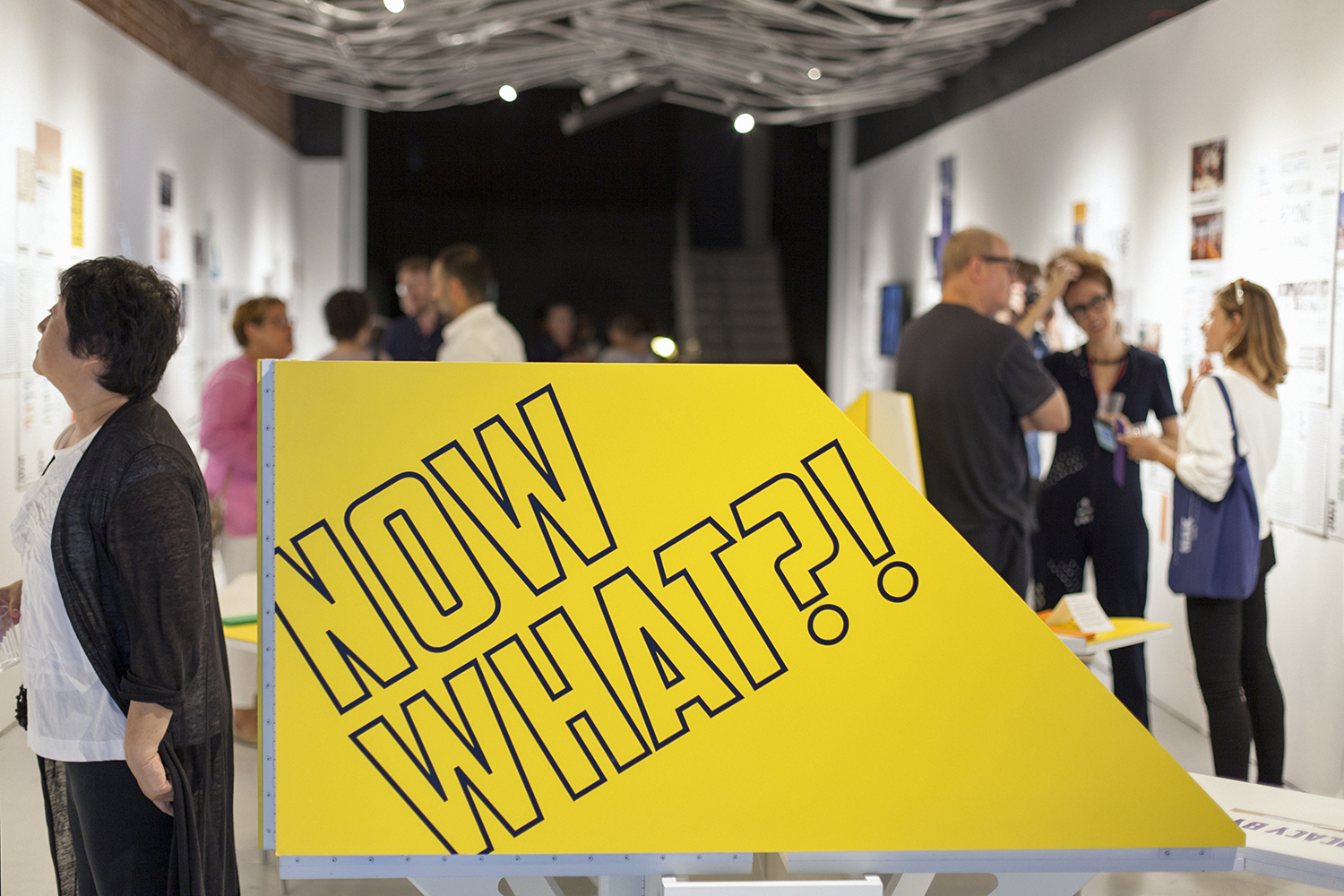How can architecture be an agent of social change?
For ArchiteXX, that question is not a hypothetical one. Since its inception in 2012, the gender equity organization has helmed tangible initiatives in the field, whether in the form of professional advancement — offering mentorship and discussion space for women entering architecture — or education, as with the group’s traveling exhibit Now What?!, which examines the history of architecture activism. Sometimes, the group even goes so far as to create the change it wants to see through direct action.
Case in point: While Now What?! is on display at the Co-Prosperity Sphere in Bridgeport this fall, ArchiteXX will boycott the Chicago Architecture Biennial, the city's three-month expo at the Cultural Center. The reason? Its sponsorship by British petroleum giant BP.
This year's Biennial, titled …and other such stories, investigates "the power the field has to shape a better, more sustainable, and more equitable future" — a mission statement that members of ArchiteXX say is incongruous with BP's support.
Opening tomorrow, Now What?! traces the intersection of architecture and civil rights movements through historical documents and visual timelines. The exhibit also features on-site panel discussions — for example, a talk on how architects can fight against their profession “being used to culture-wash the image of a global oil conglomerate with a checkered record,” as the group’s official boycott statement reads.
“We know it’s not without serious consequences, but no position is,” says ArchiteXX cofounder Lori Brown of the boycott. “Climate change is real, and the architectural profession has to start taking a stand for the future of the discipline and the planet.” (Addressing the boycott, a Biennial spokesperson responded via email, in part: "As a not-for-profit, the Chicago Architecture Biennial has found support across a number of sectors … The Biennial's leadership has worked to ensure that our stakeholders share our organizational commitment to creating an architecture exhibition and platform which address contemporary challenges in the built environment while envisioning a better future.")
ArchiteXX’s interest in the social responsibility of architecture arose out of members’ personal frustrations with the discipline. Brown started the group after giving talks at the Van Alen Institute in New York while promoting her 2011 book, Feminist Practices: Interdisciplinary Approaches to Women in Architecture. While there, she noticed a lack of organizations supporting female architects. She connected with architect Nina Freedman after the talk, and the two began to organize meetings offering mentorship to women in the field.
As ArchiteXX grew, its focus broadened to address the profession's structural lack of diversity. Sarah Rafson, an architect at Point Line Projects who sits on ArchiteXX's board, says that the diversity exhibited in many architecture schools is rarely reflected in the professional workforce.
“Architects tend to be much whiter and more male than the people that have been studying architecture for the past 30 to 40 years,” Rafson says.
Even when minority architects land jobs, the work environment can pose its own challenges. For instance, architect Roberta Washington, the former president of the National Organization of Minority Architects and cocurator of Now What?!, says she often found interactions at construction sites patronizing.
“There was one time I was introduced as the architect for a project, and they kept on looking around and saying, ‘You mean she works for the architect?’" Washington remembers. "They talked to the guy that brought me, and not to me."

Asked about specific historical movements that embody ArchiteXX's mission, Chicago liaison Keefer Dunn points to Red Vienna, the Austrian Social Democrats' push in the 1920s to build innovative public housing. But most of the time, he says, architects are too beholden to clients or government agencies to instigate broad-based change.
“One of the difficulties in architecture is that we are rarely our own clients,” Dunn says. “So even if we have social justice ambitions, we have to get people with money and resources on our side.”
Now What?!, which has already passed through New York, Los Angeles, San Francisco, Montreal, and Buffalo, highlights other social architecture projects dating from 1968 to the present. Among them: the Woman's Building in Los Angeles, the Queer Space exhibition at New York City's Storefront for Art and Architecture, and the Women's School of Planning and Architecture, an experimental summer program held in the '70s in Biddeford, Maine.
The exhibit's scope is especially relevant in Chicago, a city as lauded for its architecture as it is criticized for its inequality. Brown and Rafson point to projects like Hull House and Cabrini-Green as, respectively, examples of local architecture’s progressive victories and regressive failures. And as gentrification continues to shape Chicago's landscape, Dunn sees contemporary approaches like Social Architecture — a broad term describing spaces, real and virtual, that promote social interaction — as a novel way forward.
“These issues involve architecture in some way, but rarely do architects call the shots,” Dunn says. “That’s what I’m excited about with the show. It pushes us to build more robust social justice–oriented groups in the profession.”
Beyond the specific initiatives spotlighted in the exhibit, Now What?! aims to pique attendees' curiosity about the forces shaping their city.
“In Chicago, people already know and are impressed by their architecture," says Rafson. "But the narrative [is largely] detached from social movements. We’re trying to pull that narrative down to the grassroots level.”
Details:Bridgeport. Co-Prosperity Sphere. September 13 to October 2, by appointment or during affiliated events. Free. Check event dates at nowwhat-architexx.org.




